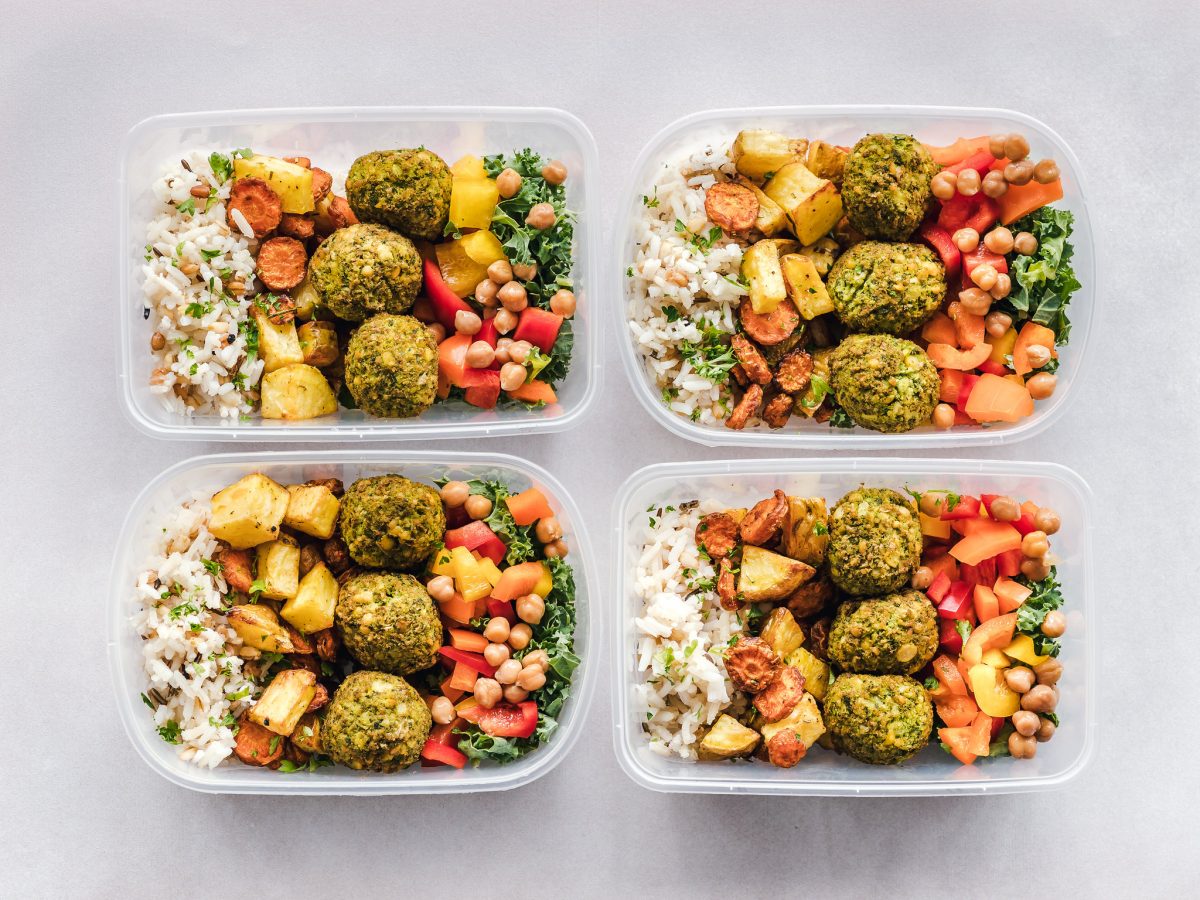Are you constantly juggling work, family, and social commitments, wondering how to fit healthy eating into your hectic life? You’re not alone. In today’s fast-paced world, finding the time and energy to prepare nutritious meals can feel like an uphill battle. In fact, a recent study found that 80% of Americans struggle to incorporate the recommended daily servings of fruits and vegetables into their diets. But don’t lose heart! We’ve got a secret weapon to help you conquer your nutrition goals: meal prep.
Meal prep is the art of planning, preparing, and portioning your meals in advance, ensuring that you always have healthy, balanced meals on hand. This strategy not only saves you time and stress but also empowers you to make better food choices even on the busiest of days. In this lighthearted and candid blog post, we’ll dive into the world of meal prep, sharing tips, tricks, and motivational insights to help you master the art of meal planning and prepping. So, let’s roll up our sleeves and embark on this delicious journey together!
The Benefits of Meal Prep
Saves time and reduces stress
One of the most appealing aspects of meal prepping is the time it saves. By dedicating just a few hours to meal prep each week, you can free up valuable time to spend with your loved ones, pursue your hobbies, or simply relax. A 2019 study published in the Journal of Nutrition Education and Behavior found that individuals who practiced meal prepping saved up to 7 hours per week compared to those who did not. With less time spent in the kitchen, you’ll find yourself feeling less stressed and more in control of your daily routine.
Encourages healthier eating habits
Meal prepping is also a powerful tool for fostering healthier eating habits. By planning and preparing meals in advance, you can ensure that your meals include the right balance of nutrients, promote portion control, and reduce the temptation to opt for unhealthy, last-minute food choices. A study published in the American Journal of Preventive Medicine found that individuals who practiced meal prepping were more likely to consume a variety of fruits, vegetables, and whole grains, leading to a healthier overall diet.
Saves money by reducing food waste and dining out
Another significant advantage of meal prepping is its potential to save you money. By planning your meals, you can create a more targeted grocery list, reducing the risk of buying unnecessary items that may eventually go to waste. According to the USDA, the average American household wastes around 32% of the food they purchase, which translates to a significant financial loss. Furthermore, meal prepping reduces the likelihood of dining out or ordering takeout, both of which can quickly add up in terms of cost. By embracing meal prep, you’ll not only be doing your wallet a favor but also making a positive impact on the environment by reducing food waste.
Getting Started with Meal Prep
Setting realistic goals
If you’re new to meal prep, it’s essential to set achievable goals that won’t overwhelm you. Start by prepping just one or two meals per week to ease into the process. As you become more comfortable and efficient, gradually increase the frequency of your meal prep sessions. Remember, the key to success lies in consistency, so it’s crucial to find a pace that works for your lifestyle and schedule.
Choosing the right meal prep style
There are several meal prep styles to choose from, and selecting the one that best suits your needs will make the process more enjoyable and sustainable. Here are three popular approaches:
- Batch cooking: This method involves preparing large quantities of a single recipe, which can then be portioned out and stored for multiple meals throughout the week. Batch cooking is ideal for those who don’t mind eating the same meal multiple times and appreciate the efficiency of cooking in bulk
- Individual meal portions: This approach involves preparing several different recipes and portioning them into individual servings. This method allows for greater variety in your meals and makes it easy to grab a meal on-the-go. Individual meal portions are perfect for those who enjoy trying new recipes and prefer not to eat the same meal multiple times in a row.
- Ingredient prep: Rather than preparing full meals, this method focuses on prepping individual ingredients that can be easily combined to create a variety of dishes throughout the week. Ingredient prep is great for those who enjoy flexibility and creativity in their meals, and it helps ensure that your ingredients stay fresh and appetizing.
Planning Your Meals
Creating a balanced meal plan
To set yourself up for meal prep success, it’s crucial to create a balanced meal plan that incorporates a variety of fruits, vegetables, lean proteins, whole grains, and healthy fats. This diversity not only ensures that your meals are nutritious but also keeps your taste buds satisfied. Aim to fill half your plate with fruits and vegetables, a quarter with whole grains, and the remaining quarter with lean proteins. Don’t forget to include a moderate amount of healthy fats, such as those found in avocados, nuts, and olive oil, to support optimal health.
Finding inspiration
To keep your meal plan fresh and exciting, explore new recipes and flavors. There are countless online resources and social media platforms that offer delicious, healthy meal ideas. Websites like Allrecipes, EatingWell, and BBC Good Food provide a wealth of recipes that cater to various dietary preferences and restrictions. Social media platforms like Pinterest and Instagram also offer a treasure trove of meal inspiration, with many accounts dedicated to sharing meal prep tips and ideas.
Organizing your shopping list
Once you’ve planned your meals, compile a shopping list to streamline your grocery shopping experience. To save time and minimize the risk of forgetting essential items, group your list according to grocery store sections, such as produce, dairy, and meat. This organization method allows for a more efficient shopping trip, helping you get in and out of the store quickly and with everything you need for your meal prep.
Prepping and Storing Your Meals
Cooking tips for efficient meal prep
Maximizing efficiency in the kitchen is key to a successful meal prep session. Here are some tips to help you make the most of your time:
- Multi-tasking in the kitchen: While one dish is cooking, work on prepping another. For example, you can chop vegetables for a stir-fry while waiting for a pot of quinoa to cook. This approach enables you to prepare multiple meals simultaneously, saving valuable time.
- Using time-saving appliances: Slow cookers and instant pots are invaluable tools for meal prep. They allow you to cook large quantities of food with minimal effort, freeing up time to focus on other tasks or simply relax. These appliances are especially useful for preparing soups, stews, and protein dishes like pulled chicken or pot roast.
Proper food storage and safety
To ensure your meals stay fresh and safe to eat, follow these food storage guidelines:
- Using airtight containers: Store your meals in high-quality, airtight containers to maintain freshness and prevent contamination. Glass containers are an eco-friendly option and can be safely used in the microwave, oven, and dishwasher.
- Storing food in proper temperature zones: Keep perishable foods like meats, dairy, and cooked grains in the refrigerator at 40°F (4°C) or below. If you’re freezing meals, ensure your freezer is set to 0°F (-18°C) or below (referenced from the FDA). Remember to thaw frozen meals in the refrigerator, microwave, or under cold running water, and never at room temperature, to prevent bacterial growth.
Labeling and organizing your meals
Proper labeling and organization will make it easy to find and enjoy your prepped meals. Including dates and meal names on containers: Use a marker or label to note the meal name and date it was prepared on each container. This practice helps you identify meals quickly and ensures you consume them within a safe time frame.
Staying Motivated and Consistent
Maintaining motivation and consistency is crucial for reaping the long-term benefits of meal prep. Here are some strategies to help you stay on track and overcome common obstacles.
Overcoming meal prep obstacles
Tips for making meal prep enjoyable: To keep meal prep from feeling like a chore, make the process fun and engaging. Listen to your favorite music, podcast, or audiobook while you cook, or invite a friend or family member to join you for a meal prep session. Experiment with new recipes and ingredients to keep your meals interesting and prevent boredom.
Tracking progress and celebrating success
Using a meal prep journal or app: Documenting your meal prep journey can help you stay accountable and motivated. Use a journal or meal prep app to record your weekly meal plans, grocery lists, and new recipes you’ve tried. Reflect on your progress and take note of the positive changes you’ve experienced, such as improved energy levels, time savings, or weight loss.
Sharing your journey with friends and family: Social support plays a significant role in maintaining motivation and fostering healthy habits. Share your meal prep journey with friends and family, either in person or through social media. This sharing can provide you with encouragement, recipe ideas, and a sense of community. Celebrate your successes, no matter how small, and remember that every step you take toward healthier eating is a victory.
By incorporating these strategies, you’ll be better equipped to stay motivated and consistent in your meal prep journey, ultimately leading to a happier, healthier lifestyle.
Conclusion
In this blog post, we’ve explored the ins and outs of meal prep, including its numerous benefits such as time savings, reduced stress, healthier eating habits, and cost savings. We also covered practical tips for getting started, planning meals, prepping and storing food, and staying motivated throughout your meal prep journey.
By embracing meal prep as a lifestyle change rather than a temporary fix, you’ll be setting yourself up for long-term success in achieving optimal health. The skills you learn through meal prep, such as planning, organization, and time management, will not only benefit you in the kitchen but also in other aspects of your life. Remember, the key is to find a meal prep routine that works for you and your unique needs, and to be patient with yourself as you make this positive shift toward healthier eating.
We’d love to hear about your meal prep experiences, tips, and favorite recipes! Please feel free to share your insights in the comments section below. Let’s create a supportive community where we can learn from one another and celebrate our successes in mastering the art of meal prep. Together, we can work toward achieving optimal health and well-being.


